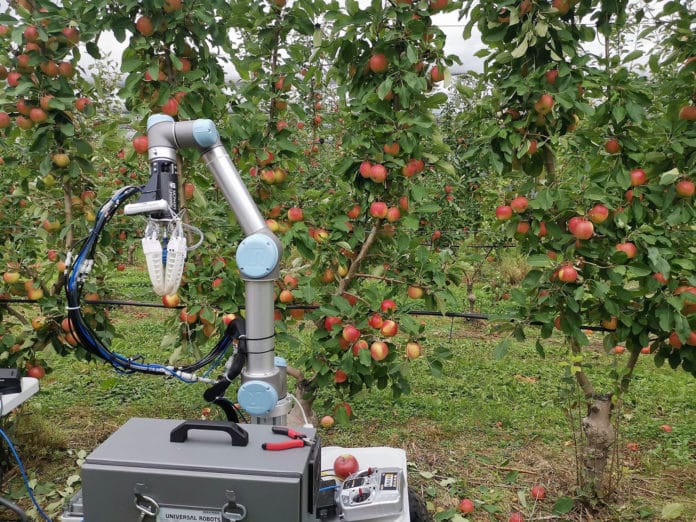The integration of robots is nothing new to the modern farm. Emerging applications of robots or drones in agriculture include weed control, cloud seeding, planting seeds, harvesting, environmental monitoring, and soil analysis. Now one more has entered the game – the robot capable of performing autonomous apple harvesting.
Developed by engineers from the Department of Mechanical and Aerospace Engineering at Monash University (Australia), new autonomous robotic technology has the potential to become the ‘apple of my eye’ for Australia’s food industry as it deals with labor shortages and an increased demand for fresh produce.
The autonomous harvesting robot can identify, pick, and deposit apples in as little as seven seconds at full capacity. Like any other autonomous robot, the apple-harvesting robot uses a mix of cameras and deep learning algorithms to scan orchard trees and detect fruit.
Its vision system can identify more than 90% of all visible apples seen within the camera’s view from a distance of approximately 1.2m. The system can work in all types of lighting and weather conditions, including intense sunlight and rain, and takes less than 200 milliseconds to process the image of an apple.
An implemented ‘path-planning’ algorithm is able to generate collision-free trajectories of all reachable apples in the canopy. It takes just eight seconds to plan the entire trajectory for the robot to grasp and deposit an apple.
“The robot grasps apples with a specially designed, pneumatically powered, soft gripper with four independently actuated fingers and a suction system that grasps and extracts apples efficiently while minimizing damage to the fruit and the tree itself,” said Dr. Chao Chen, who led the team. “In addition, the suction system draws the apple from the canopy into the gripper, reducing the need for the gripper to reach into the canopy and potentially damaging its surroundings. The gripper can extract more than 85% of all apples from the canopy that were planned for harvesting.“
In the field trials conducted this year, the apple harvesting robot was able to harvest more than 85% of all reachable apples in the canopy, as identified by its vision system. Only 6% of the harvested apples were damaged due to stem removal, although it is a fruit that can still be sold. With the robot limited to half its maximum speed, the median harvest rate was 12.6 seconds per apple.
The cycle time was reduced to roughly nine seconds in streamlined pick-and-drop scenarios. By using the robot’s capacity speed, individual apple harvesting time can drop to as little as seven seconds. It is not as fast as human workers, but it can reduce the cost of the job, and you can expect it to work around the clock.
